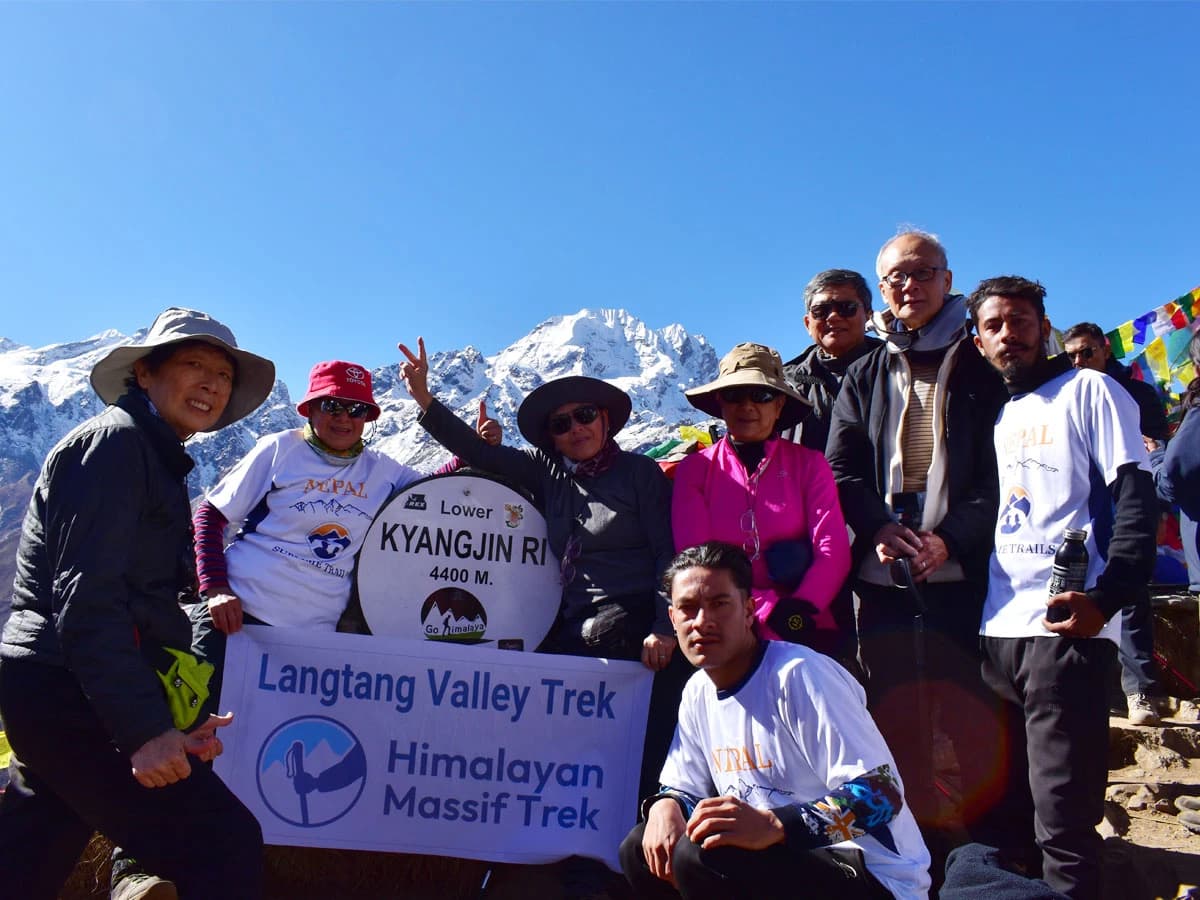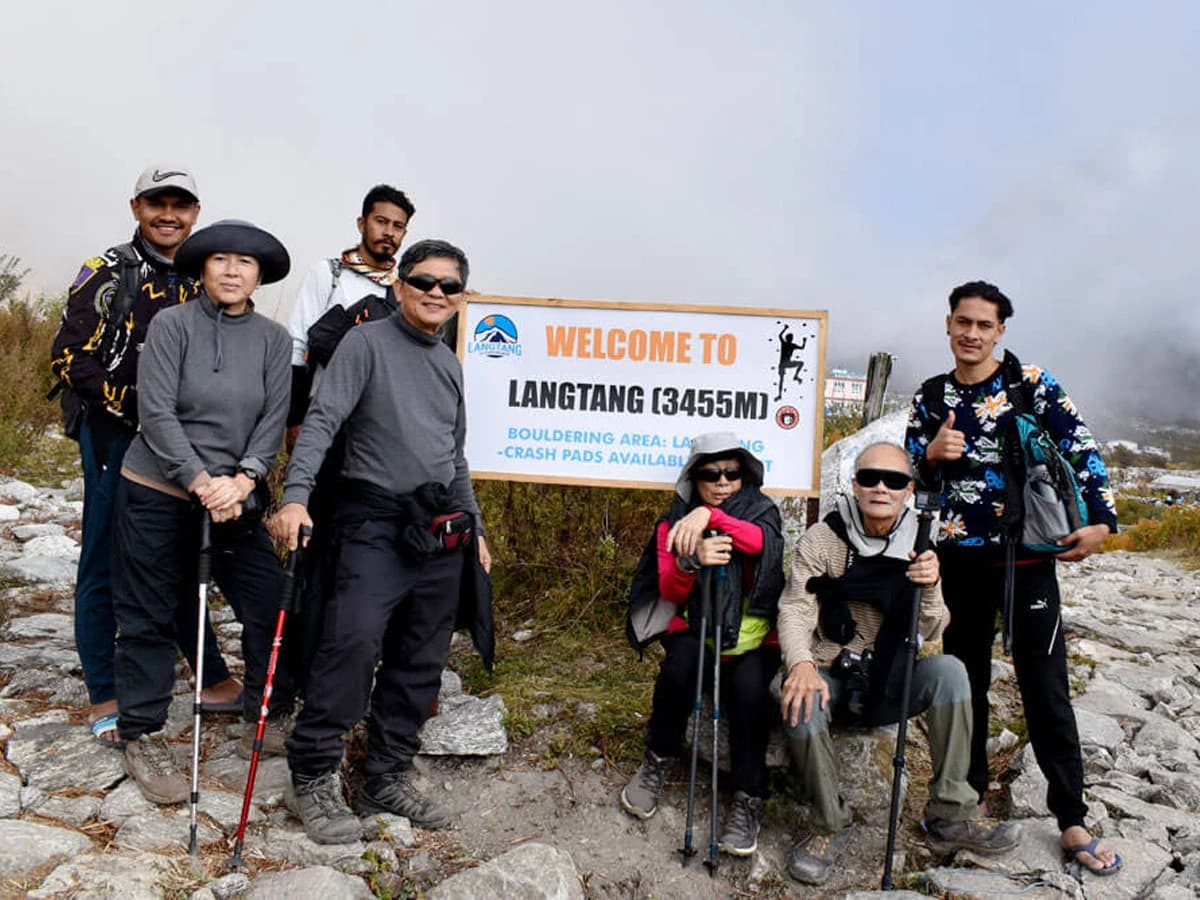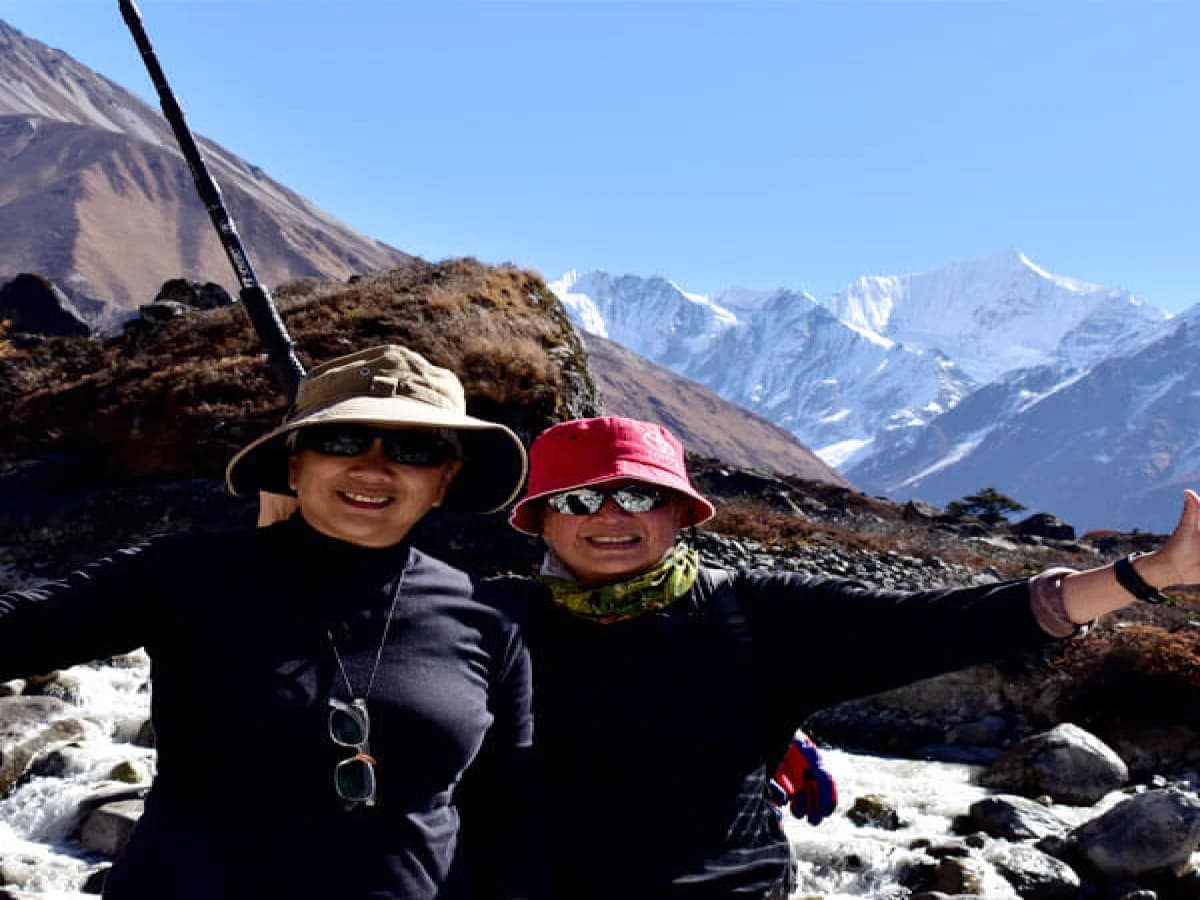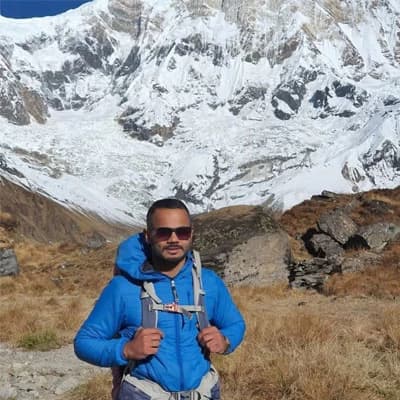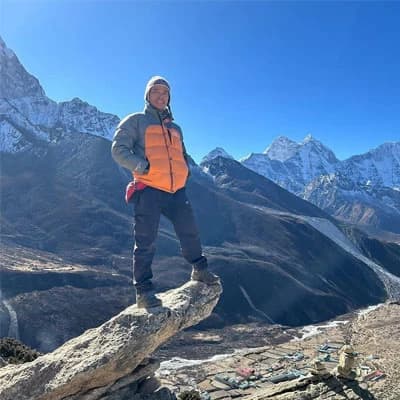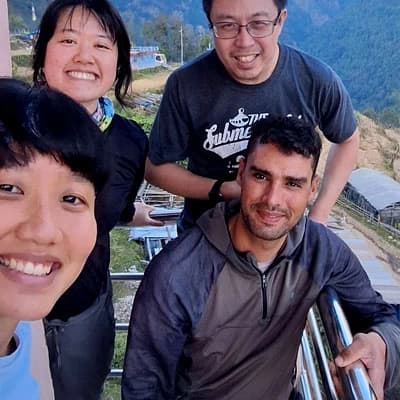The Langtang Valley Trek is a perfect Himalayan adventure, offering stunning landscapes, rich Tamang culture, and serene mountain views, all within an 8-day journey. Starting from Syabrubesi, you will trek through lush forests, traditional villages, and alpine meadows, reaching the peaceful Kyanjin Gompa at 3,870 meters. Surrounded by majestic peaks like Langtang Lirung and Dorje Lakpa, this trek provides an unforgettable mix of nature, culture, and breathtaking vistas.
Langtang Valley Trek
The Langtang Valley Trek offers an incredible Himalayan adventure, taking you through lush forests, tranquil villages, and breathtaking mountain views. Known as “The Valley of Glaciers,” the beautiful Langtang Valley, where Tibetan people first settled, is full of rich culture, nature, and wildlife, all packed into a manageable 8-day trek.
Starting from the village of Syabrubesi, the trek leads you through blooming forests and pastures, with stops at charming Tamang villages like Bamboo, Lama Hotel, and Langtang, where you can connect with the local culture.
On day 3 as you ascend from Lama Hotel to Langtang Village, the landscape transforms into alpine meadows, with snow-capped peaks rising above, including Langtang Lirung, Langtang Ri, and Dorje Lakpa. These breathtaking views are complemented by encounters with the rich flora and fauna of the region, including yaks and Himalayan tahr.
Reaching Kyanjin Gompa on day 4, the trek’s highlight, you will experience a serene atmosphere surrounded by towering mountains and glaciers. The very next day you will take an optional hike to Tserko Ri which offers even more panoramic views of the Langtang Valley, with early sunrise, making it a true trekker’s paradise.
After returning from the hike, you will spend the rest of the day acclimatizing in Kyanjin. This is the perfect opportunity to visit the local yak cheese factory, where you can observe the traditional cheese-making process. And begin your return journey from day 6.
The Langtang Valley trekking experience is ideal for those looking for an accessible yet rewarding adventure, offering the perfect mix of culture, nature, and spiritual discovery. The Journey to the heart of Langtang promises unforgettable moments and is a great way to experience the best of Nepal’s Himalayan beauty.
Highlights
- A peaceful opportunity for meditation and spiritual reflection amidst the tranquil surroundings of the Langtang Valley.
- Stargazing under clear Himalayan skies at Kyanjin.
- The Panoramic Viewpoint Of Tserko Ri (5,033 m), including Langtang Lirung, Dorje Lakpa, Langshisha Ri, Gangchempo, Shishapangma, and Yala Peak.
- Encounters with rare wildlife like red pandas and Himalayan black bears.
- Immersion in Tibetan and Tamang culture.
- Fresh yak cheese tasting at Kyanjin Gompa.
- Trek through vibrant rhododendron forests, crossing traditional suspension bridges over rushing rivers.
- Diverse landscapes within Langtang National Park.
- Travel time may vary depending on the nature of the transport and road conditions.
- In case of bad weather, we may not be able to see the views and may not complete all the activities mentioned on the itinerary
Langtang Valley Trek Itinerary
The adventure begins with a scenic 7-8 hour jeep ride from Kathmandu to Syabrubesi, a small but bustling village located at the confluence of the Langtang and Trishuli rivers. Along the way, enjoy the changing landscapes as you drive through winding roads, terraced fields, and forests.
The journey offers a peek into local life, passing through riverside villages and small settlements. The first night is spent at a hotel located just above where the Langtang River meets the Trishuli River.
The roar of the river provides a natural soundtrack as you unwind after your journey, with the sound of water lulling you into a peaceful rest.
On Day 2, you will continue your trek to Lama Hotel, a charming stop along the trail. The journey starts with a gradual ascent, passing through dense forests of rhododendron and oak.
Early in the day, trekkers cross the Bhote Koshi River via a wooden bridge, where the sound of rushing water adds a calming touch to your trek. As you traverse along the trail, the path leads to Dovan, a small village offering a chance to rest before continuing the climb.
After a short break, the trail winds through the forested path until you arrive atwinds through dense forests, eventually reaching Rimche (2,400 m), a tranquil village nestled by the river, where you can take in the serene environment.
The highlight of this day is the steady, peaceful climb through the forest, with the focus being on quiet reflection and the soothing sounds of nature.
The trek begins with a gradual ascent from Lama Hotel (2,380 m), passing through a diverse landscape of dense woodlands and scenic meadows.
The trail gradually opens up, offering glimpses of the towering peaks surrounding the Langtang Valley. Along the way, trekkers pass by several small villages, including Ghora Tabela, a charming stop for a brief rest.
As the ascent continues, the landscape shifts, with lush forests making way for more open terrain, revealing stunning views of snow-capped mountains like Langtang Lirung and Gangchenpo.
After approximately 7 hours of trekking, you will reach Langtang Village (3,430 m), the first major settlement in the valley, offering a glimpse into the local Tamang culture and a well-deserved rest before continuing your journey further into the heart of the Langtang region.
On Day 4 of your trek, the journey takes you from Langtang Village to the serene Kyanjin Gompa, a peaceful Buddhist monastery. The trail, though short, offers stunning views as the forest thins out, revealing expansive alpine meadows. Along the way, you will pass yak pastures where local herders guide their livestock, adding a glimpse of the valley's traditional lifestyle.
One of the key highlights of the day is the Kyanjin Cheese Factory, located just before the monastery. Here, you can learn about the traditional methods of yak cheese production and taste some of the famous local cheese.
As you approach Kyanjin Gompa, the towering Langtang Lirung (7,227 m) looms in the background, and the expansive views of the surrounding peaks make the effort worthwhile. Upon arrival, you can explore the monastery, which holds great cultural and spiritual significance for the locals.
Day 5 is the most challenging yet rewarding part of the Langtang Valley trek. Starting early, you will use headlamps to navigate the rugged trail, making your way up to Tserko Ri to catch the breathtaking sunrise.
As you ascend, the path winds through rugged terrain and snow-covered fields, revealing towering peaks like Langtang Lirung, Dorje Lakpa, and Yala Peak.
Upon reaching the summit, prayer flags flutter in the cool breeze, adding a vibrant contrast to the peaceful landscape of Tserko Ri. From here, you will be treated to panoramic views of the Langtang Himalayas in all their glory, with glimpses of Shishapangma and even parts of the Tibetan plateau.
The stillness of the moment, combined with the sound of the wind and the flutter of flags, creates an atmosphere of peace and reflection, making this an unforgettable experience.
After soaking in the serene beauty, it's time to descend back to Kyanjin Gompa. The descent is easier, giving you a chance to reflect on the incredible experience you have just had.
Back at the village, you can relax and recharge while enjoying the local yak cheese, and exploring more of its serene surroundings. You can even purchase authentic yak cheese as a unique souvenir for your loved ones.
Day 6 is all about descending from Kyanjin Gompa to Lama Hotel, offering a refreshing change from the uphill trek. The journey is less physically demanding but requires careful footing as you navigate steep sections. Make sure you have quality trekking poles to make the descent easier on your knees.
As you move downhill, the towering peaks gradually fade into the distance, giving way to lush greenery and the familiar sound of the Langtang River rushing alongside the trail.
Passing through Langtang Village, you will have a chance to soak in the details like friendly locals, traditional stone houses, and the charm of daily life that you may have missed earlier.
On Day 7, as you begin your descent from Lama Hotel to Syabrubesi, there's a bittersweet sense of farewell to the stunning Langtang Valley. The once-challenging climbs and awe-inspiring views now feel like a distant memory, replaced by the peaceful quiet of the journey back.
Along the way, you will pass through the same rhododendron forests and hear the familiar sounds of nature—Himalayan monal birds calling through the trees and the occasional sight of grazing yaks along the trail. These gentle reminders of the valley’s wild beauty create an intimate connection to nature as you say goodbye.
As you approach Syabrubesi, there’s a quiet sense of gratitude for the journey and a peaceful knowing that the essence of Langtang Valley will remain with you long after you leave.
Day 8 begins with a scenic drive back to Kathmandu, taking 8-9 hours.
As you descend from higher altitudes, the tranquil atmosphere of Langtang Valley slowly fades into the bustle of Kathmandu.
While the journey back contrasts with the calm of the mountains, the memories of the trek including the peaks, wildlife, and local culture, will remain with you.
Langtang Valley Trek Route Map
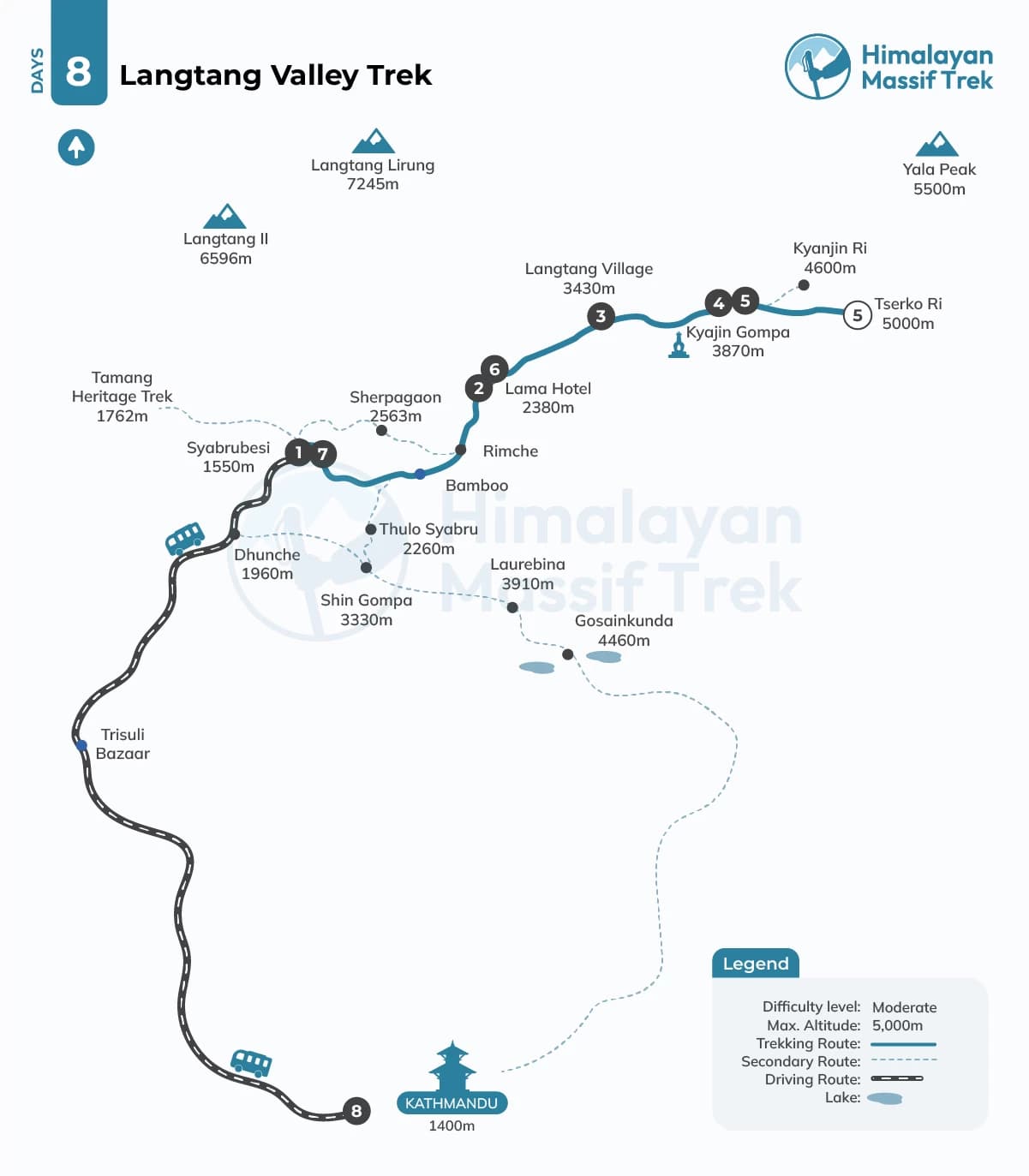

Cost Details
- Full board meal during the trek (Breakfast, Lunch and Dinner)
- Tea-house accommodation for 7 nights during the trek
- Sharing transport from Kathmandu to Syafrubensi and return (private Jeep addon available)
- Experienced English-speaking trekking guide for the trek
- 1 porter sharing for two people (porter for single trekker addon available)
- Langtang National Park Entrance Fee and TIMS Card Fee
- Down jacket and sleeping bag to use for 8 days (return after the trek)
- Necessary paperwork with the Government of Nepal and the Tax department
- First Aid service in case of minor injuries
- Rescue & travel insurance, trip cancellation costs, accident or health emergency, evacuation, loss, theft, or damage to baggage and personal effects (We strongly advise you get personal travel insurance.)
- Personal expenses (phone calls, internet, laundry, bar bills, battery recharge, extra porters, cold drinks, bottled or boiled water, hot shower, etc.)
- Drinking water, cold drinks and hot drinks, Alcoholic beverages
- Nepal entry visa fee
- Tipping for guide and porter
To confirm your payment, a deposit payment is required, which is 30% of the total booking price. This deposit helps us secure permits, logistics, and other necessary arrangements for your trek.
We understand that plans can change, and we strive to be as flexible as possible. However, to cover operational costs, a cancellation fee applies. This is a percentage of your total booking price and is deducted from the deposit payment.
Cancellation Fees
Cancel 30% days before departure: 5% of the trip cost
Cancel between 10 to 30 days before departure: 10% of the trip cost
Cancel within 10 days of departure: 20% of the trip cost
If you need to cancel, please notify us as early as possible to reduce charges.
Rescheduling
Unexpected circumstances can disrupt travel plans, even if you still want to do the trip. To support our clients, we have generously waived all rescheduling fees. You can postpone and reschedule your trip at no additional cost, as long as the new departure date falls within one year of your original booking.
Upgrades
If you wish to upgrade your accommodation, transportation, or any other services not mentioned in the Trip Includes section, please be aware that these upgrades will incur additional costs. We can assist in arranging these options for you based on your preferences and availability.
Dates & Availability
Private TripIf you don't find an appropriate date, you can propose a Preferred Departure Date, and we’ll ensure the trip runs as scheduled just for you.
Trip Gallery
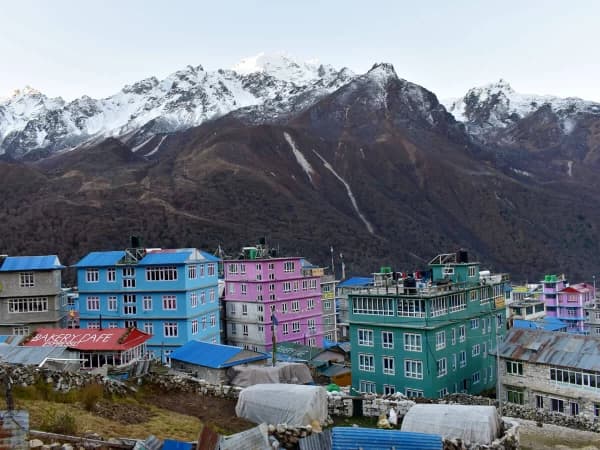
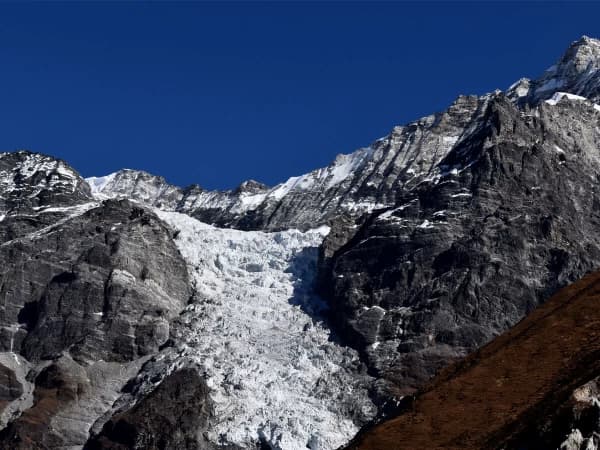
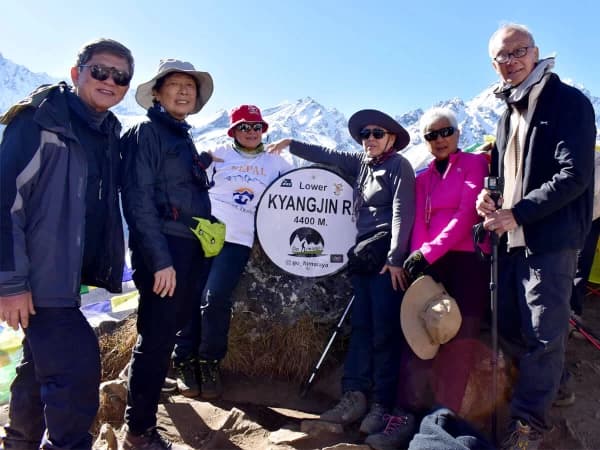
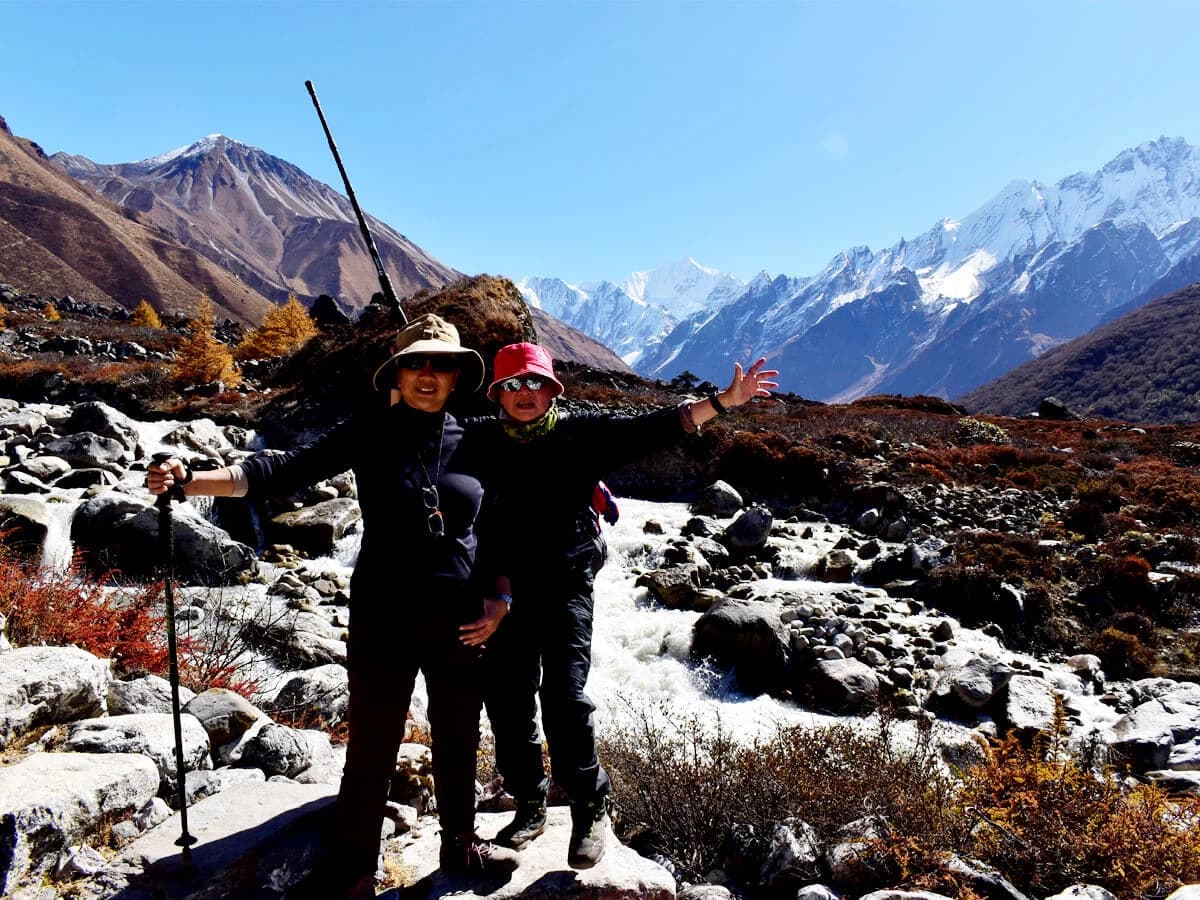
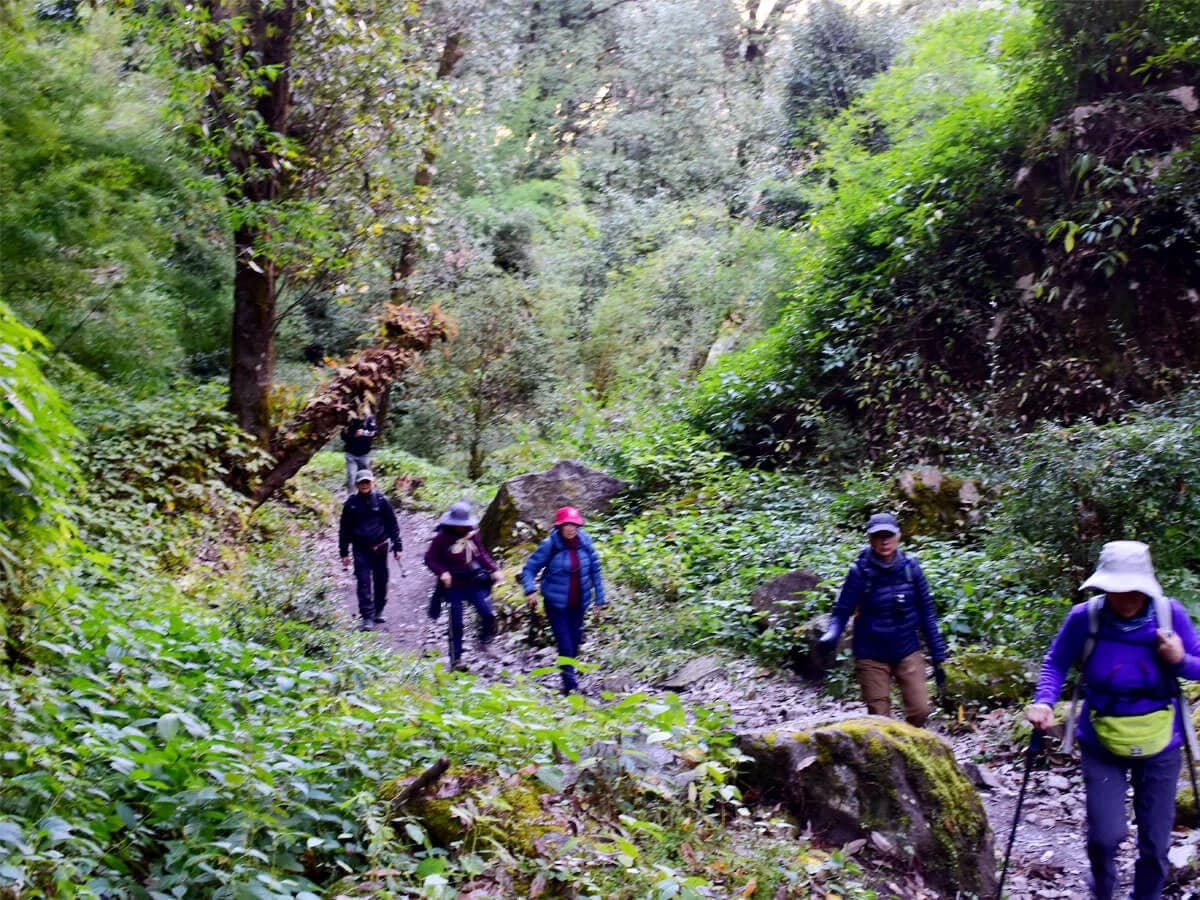
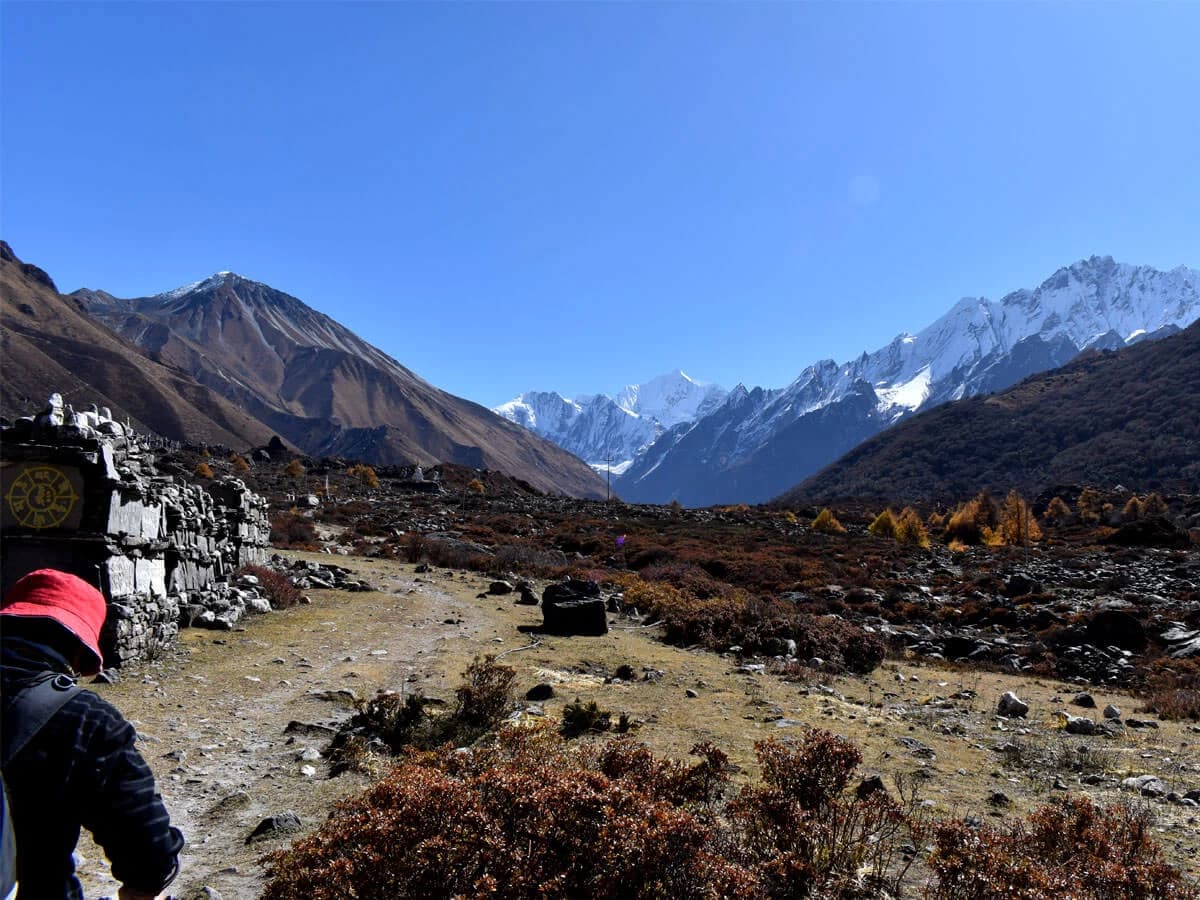
Essential Information
A Typical Day on the Langtang Valley Trek
Starting and finishing in Kathmandu, the Langtang Valley Trek is easily accessible by a scenic bus ride or private jeep to the trailhead at Syabrubesi, which takes just a few hours.
As you start your trekking to Langtang village, each day brings a new adventure with a similar rhythm. The day starts with breakfast in the communal dining hall where all the trekkers come around 6 or 7 am. You can place your breakfast order the night before if you want to spare some time for yourself.
After eating, your porter (if you have one) will head off with your main bag, while you will carry your daypack. Make sure you have all the essentials like water, snacks, sunscreen, and anything else you may need for the day.
As you start your trek, your guide will point out various cultural landmarks along the way, such as Buddhist prayer flags, mani stones, and shrines. Throughout the journey, your guide will share fascinating details about the mountains and their significance to the local Tamang people.
Lunch is typically enjoyed at small tea shops along the route. However, on the day you reach Kyanjin Gompa, you will have both lunch and dinner at this scenic stop. There you can interact with fellow trekkers discuss the day's highlights and share your experiences while your guide prepares you for the following day’s adventure.
After a strenuous day of trekking, it's common to retire early to bed, ensuring you are well-rested and ready to take on the next day's adventure through the stunning Langtang Valley.
Food and Rooms in the Langtang Trail
On your journey to the heart of Langtang, you will stay in tea houses throughout the trek. The well-established tea houses along the trail provide cozy rooms with twin-sharing beds, clean mattresses, pillows, and blankets.
In the lower altitudes, some rooms may have attached bathrooms, though this becomes rarer as you ascend. Bathrooms are typically shared, and hot water is available for an additional charge.
For breakfast, you will get options like Tibetan bread, chapati with jam or honey, porridge, muesli, and omelets. Lunch and dinner menus typically feature traditional Nepali dishes like Dal Bhat (lentil soup with rice), fried rice, pasta, momo (dumplings), and noodles. And for desserts apple pie and rice pudding are available.
You will find communal dining areas in all the tea houses, often with a fireplace, providing a cozy and welcoming space to unwind after a day of trekking.
How Difficult is the Langtang Valley Trek?
The Langtang Valley Trek balances being beginner-friendly and offering moderately challenging sections.
The trek involves steady altitude gains and daily walking hours ranging from 6 to 8, making it manageable for most enthusiasts. Starting at Syabrubesi (1,550 m), the trail gradually ascends to the serene Kyanjin Gompa (3,870 m) and peaks at the breathtaking Tserko Ri (5,000 m).
|
Day
|
Route
|
Starting Altitude (m)
|
Sleeping Altitude (m)
|
Daily Altitude Gain (m)
|
Total Distance (km)
|
|
Day 1
|
Kathmandu to Syabrubesi
|
1324 m
|
1460 m
|
136 m
|
122 km
|
|
Day 2
|
Trek to Lama Hotel
|
1460 m
|
2470 m
|
1010 m
|
11 km
|
|
Day 3
|
Lama Hotel to Langtang Village
|
2470 m
|
3430 m
|
960 m
|
14 km
|
|
Day 4
|
Langtang Village to Kyanjin Gompa
|
3430 m
|
3830 m
|
400 m
|
7 km
|
|
Day 5
|
Kyanjin Gompa to Tserko Ri to Kyanjin Gompa
|
3830 m
|
5033 m
|
1203 m
|
16 km
|
|
Day 6
|
Kyanjin Gompa to Lama Hotel
|
3830 m
|
2470 m
|
-1360 m
|
11 km
|
|
Day 7
|
Lama Hotel to Syabrubesi
|
2470 m
|
1460 m
|
-1010 m
|
10 km
|
|
Day 8
|
Syabrubesi to Kathmandu (Drive)
|
1460 m
|
1324 m
|
-136
|
122 km
|
The daily altitude gain is carefully spaced to allow proper acclimatization, though trekkers still need to be mindful of altitude sickness, particularly on the climb to Tserko Ri.
Best Seasons for Langtang Valley Trek
The best times for Langtang Valley exploration are during spring (March to May) and autumn (September to November).
In spring, the forests come alive with vibrant rhododendron blooms, painting the trails in shades of red, pink, and white, making the journey especially colorful and picturesque. This season is also perfect for spotting wildlife as animals become more active after the winter.
Conversely, autumn offers warm and crystal-clear skies. The cooler weather provides comfortable trekking conditions, and the post-monsoon freshness adds a crispness to the air, making it the ideal time for photography and soaking in the panoramic mountain landscapes.
Winter (December to February) is also possible but it is colder, with snow covering parts of the trail. For a challenging trek, winter is perfect for an adventure lover.
During Summer (June to August) the valley is lush and vibrant. However, heavy rains make the trails slippery and harder to walk on. There is also a higher chance of landslides, especially in steep areas and narrow valleys.
Also, leeches are more common during this season, making trekkers uncomfortable.
Porter Services and Guides
Carrying heavy gear at high altitudes can be tiring, especially for first-time trekkers. With Himalayan Massive Trek, our experienced porters handle your luggage, letting you trek stress-free and without extra strain.
Our attentive guides also ensure your safety and comfort by monitoring your health, setting a manageable pace, and offering support throughout the journey. They will enrich your experience with their deep knowledge of the region’s culture, geography, and traditions, turning the journey into a holistic adventure.
Together, they make your trekking experience smoother, more enjoyable, and hassle-free, so you can focus entirely on the adventure.
Langtang Valley Trek Equipment List
FAQs
The Langtang Valley Trek typically takes 7-8 days and requires 6-8 hours of walking, depending on your pace and rest days.
The trek is moderate in difficulty. It involves steady ascents, some steep climbs, and higher altitudes, but it is accessible for most trekkers with average fitness levels.
Yes, the Langtang Valley Trek is suitable for beginners with a basic level of fitness. The trek offers moderate difficulty, making it perfect for those new to trekking in Nepal. The Langtang Trekking route is well-established, and while it does involve some uphill sections, it’s not as challenging as other high-altitude treks like Everest Base Camp.
The highest point of the Langtang Valley Trek is Tsergo Ri, at 5,000 meters (16,500 feet).
The best time to trek the Langtang Valley is during the pre-monsoon (spring) season, from March to May, and the post-monsoon (autumn) season, from September to November. These months offer clear skies, stable weather, and ideal conditions for a Langtang Valley adventure.
Some of the must-see highlights include the serene Kyanjin Gompa, stunning views from Tserko Ri, the wildlife and flora along the Langtang Valley Trail, and the traditional Tamang villages.
No, Everest is not visible from the Langtang Valley. However, you will have stunning views of other peaks like Langtang Lirung, Dorje Lakpa, and Ganesh Himal.
Yes, you can trek without a guide. However, it is highly recommended to hire one for safety and navigation, especially in remote areas. The trails can be tricky, and a guide can enhance your experience.
Trekkers can stay in comfortable tea houses along the Langtang Valley trekking route. These basic yet cozy accommodations offer a unique chance to experience local hospitality while enjoying delicious local meals. The Langtang Valley Trekking packages typically include tea house stays, ensuring a memorable and authentic Langtang Trek Nepal experience.
You may spot rare animals such as red pandas, Himalayan tahr, and monkeys. Additionally, the area is home to numerous bird species, like the Himalayan monal and other exotic birds.
Curated Itinerary
Our carefully designed itinerary ensures you get the most out of your time in the Langtang region. It balances stunning landscapes, cultural experiences, and comfortable trekking days, offering a fulfilling adventure tailored to your preferences.
Private and Group Joining Options
At Sublime Trails, we offer both private and group joining options to match your travel style. Whether you prefer trekking with loved ones at your own pace or joining a group to share the adventure with like-minded travelers, we’ve got you covered.
Small Groups Prioritized
We prioritize small groups to provide you with a more personal and flexible trekking experience. This approach ensures better communication, individualized attention, and the chance to fully immerse yourself in the beauty of the Annapurna region.
Experienced English-Speaking Guides
Our experienced English-speaking guides are dedicated to making your trek smooth and enjoyable. With years of knowledge about the local culture, terrain, and trekking safety, they will keep you informed and engaged throughout the journey. Their friendly nature and expertise will ensure that your trek is both memorable and worry-free.
Reliable Safety and Crisis Management Backend
Your safety is our top priority. We have a reliable safety and crisis management backend to support you in any situation. From emergency evacuation plans to quick medical assistance, our team is always prepared to handle challenges, ensuring your peace of mind as you explore the breathtaking Langtang region.
- Expertise in High-Altitude Trekking Adventures
- Over 18 Years of Experience in The Himalayas
- Authorized and Reliable Trekking Partner
- Trusted by Thousands of Adventurers Worldwide

The landscape was breathtaking, but the people made this trek unforgettable. Our tea house hosts were the kindest, always checking if we needed extra blankets...
Langtang was beyond beautiful—less crowded than Everest, with warm-hearted locals and stunning landscapes. The trails went through dense forests, villages, and finally into the high...
